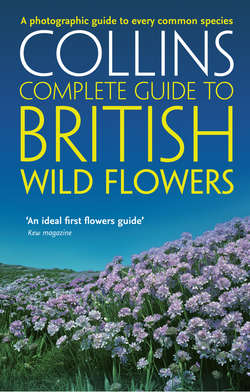Читать книгу British Wild Flowers: A photographic guide to every common species - Paul Sterry - Страница 7
ОглавлениеBASIC BOTANY
IN COMMON WITH OTHER living organisms, plants have the abilities to grow, reproduce themselves, respond to stimuli and – to a limited extent compared to most animals – move. What sets them apart from animals in particular, and defines plants as a group, is their ability, in almost all species, to manufacture their own food from inorganic building blocks. Fundamental to this ability is the process called photosynthesis, in which plants use energy from sunlight to convert carbon dioxide from the air and water into glucose. Oxygen is a by-product of this reaction. A pigment called chlorophyll is the agent that extracts from sunlight the energy needed to fuel the reaction; its coloration is what makes plants green.
The plants covered in this book are the most advanced of their kind in evolutionary terms. All have the ability to reproduce sexually and flowers are the means by which this process is achieved. Flower structure is as varied as it is complex, and the fact that whole books, including this one, can be devoted to detailing its diversity is testament to this. Flower structure is dealt with in more detail on page 10.
Among terrestrial plants the process of photosynthesis is difficult to demonstrate outside the laboratory. However, certain submerged aquatic plants, such as this Water Starwort, produce bubbles of oxygen when they are exposed to bright sunlight, indicating that photosynthesis is indeed taking place.
THE ROLE OF PLANTS IN ECOLOGY
The importance of plants in the global ecosystem, and at the local level, cannot be overstated. Not only do plants generate (through photosynthesis) the atmospheric oxygen that all animals need to breathe but, as a source of food, they underpin food chains across the world. Without plants, life on earth as we know it would not have evolved and could not survive.
The survival of plants and animals is inextricably linked at the general level, but there are plenty of highly specific instances of dependence, the relationship often hinted at by their English names. Without their namesake-specific foodplants, neither the Figwort Weevil (left) nor the Mullein Moth (right), shown here as a caterpillar, could survive.
